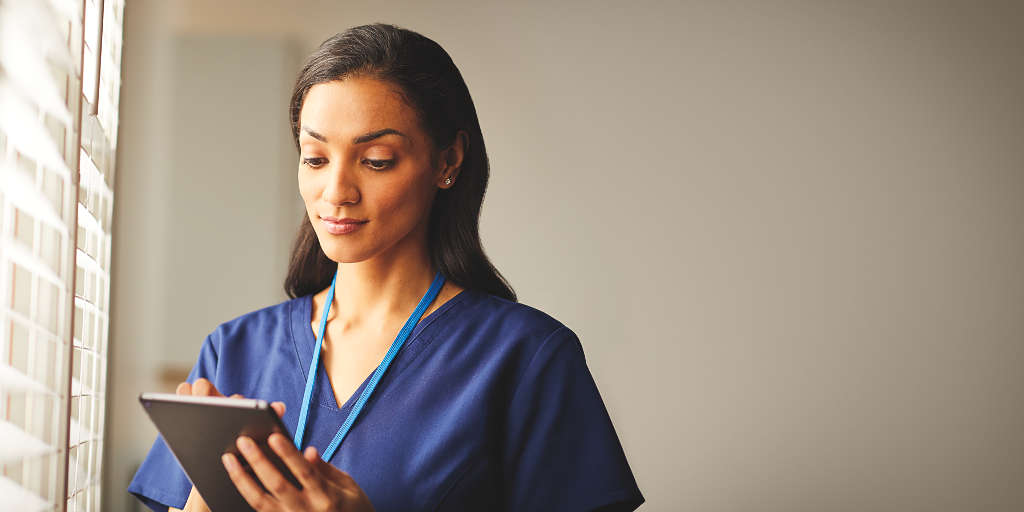
Why your central monitoring unit should embrace the only single-platform solution
- By Philips
- July 31 2025
- 4 min read
While central monitoring units (CMUs) provide key benefits for patient safety and hospital operations, they also represent complex environments. Robust data streams must flow easily between patient monitors and centralized systems, and meaningful alarms and reliable information must quickly reach frontline teams making critical care decisions. Given those requirements, it’s essential to determine where each component will come from when planning a CMU. Only Philips offers a single-platform solution for health systems looking to implement a CMU or upgrade their existing system.
At-a-glance:
- Central monitoring units can provide additional oversight for patient safety, promote effective alarm management and provide relief for overburdened frontline teams.
- CMU solutions depend on middleware for systems integration, device interoperability and communication of alarms.
- By incorporating its own software – rather than relying on third-party vendors – Philips ensures dependability, accountability and security for technical deployment and maintenance of a CMU.

The differences between a single-platform CMU and multiple vendors
Across the country, health systems are turning to central monitoring units for additional oversight of certain patient populations and relief of overburdened care teams flooded with alarms.
Effective operation demands that systems integrations, device interoperability and alarm communications all work seamlessly – a requirement that particularly holds true for next-generation CMUs offering new tools and supporting innovative workflows.
Key connections rely on middleware, which is where challenges can lie. CMU solutions that rely on third parties – rather than directly developing and overseeing all components – can introduce important ramifications for health systems, in several key areas.
Safety and reliability
Safe patient monitoring depends on the infrastructure it’s built on. Information must consistently arrive at the promised speed and at the intended destination. It must be accurate. And it must add value. A vendor that controls each step of the process can make sure those expectations are met. It can, for example, ensure that alarms and other data get sent to care teams in the most direct fashion possible, rather than re-routed to account for additional software.
Simplicity and accountability
Even the best-designed software runs into occasional hiccups, with patient monitoring no exception. With a single-vendor solution, health systems don’t have to manage multiple relationships (and potentially, contracts) or worry about what happens when existing partnerships between parties run into trouble. There’s also no finger-pointing between vendors when a challenge does arise. Health systems can quickly get the troubleshooting they need, from the group that knows the (sole) system the best.
Security
A single-platform solution means the same partner oversees all aspects of security when it comes to guarding patient data, including encryption. The partner can work closely with health systems to integrate with existing network protections.
What the single-platform Philips Central Monitoring Unit (CMU) offers
The Philips CMU provides a cohesive and purposeful end-to-end solution, one with critical components such as tools for network management and clinical decision support directly accounted for in its design.
It’s built around Philips PIC iX, the informatics platform that connects CMU workstations with patient monitors and central stations across hospitals while capturing, storing, analyzing and sharing data. Featuring sector flexibility and scalability, fourth-generation PIC iX offers web viewing and traditional central station access, as well as the ability to view data on smartphones and take action.
Philips designed and controlled software connections that make that possible include solutions for:
Interoperability with information systems
Philips IBE seamlessly connects PIC iX to hospital information systems for greater insight, coordination and workflow support. From ADT systems, it secures patient demographics, ensuring assigned telemetry monitors get placed on the right people.
From the EMR, IBE pulls in staff assignments, to help CMU teams identify the clinicians they might need to notify [1]. The EMR connection also allows monitor techs to digitally measure, annotate, save and export wavestrips straight to medical records.
Integration of other medical devices
While most CMUs focus on information from telemetry monitors – and, less frequently, on higher-acuity beside monitors – some health systems may want additional insights from other equipment connected to the patient. Featuring more than 1,000 drivers, the Capsule Medical Device Information Platform from Philips captures that data from a wide range of third-party medical devices. MDIP standardizes data formatting and makes it viewable within PIC iX.
Alarm communications
The key to timely and reliable CMU alarm distribution, Philips Event Notification routes alarms to designated clinicians using a range of communication devices, powers automatic dispatch of certain alarms and escalates unacknowledged alarms along set pathways. It also supplies monitor techs with alarm status and history.
Pairing Event Notification with the Philips Care Assist smartphone app provides even greater visibility for hospital teams. Inside the CMU, techs see alarm receipt and response, for greater confidence in communications. Within the hospital, clinicians gain Act Anywhere capability. They can view the unique Philips “alarm snippet” for greater context, watch streaming waveforms, and save and export wavestrips. They can also manage alarms and take patient measurements.
Copy this URLto share this story with your professional network
Sign up for news and updates

Footnotes
- Staff assignments via EMR initially available for Epic
Disclaimer
Results are specific to the institution where they were obtained and may not reflect the results achievable at other institutions. Results in other cases may vary.